Deck 14: Radiologic Evaluation of the Ankle and Foot
Question
Question
Question
Question
Question
Question
Question
Question
Question
Question

Unlock Deck
Sign up to unlock the cards in this deck!
Unlock Deck
Unlock Deck
1/10
Play
Full screen (f)
Deck 14: Radiologic Evaluation of the Ankle and Foot
1
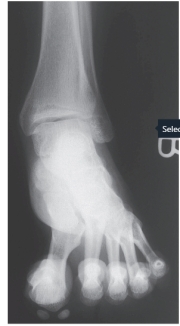
-Refer to the figure. Name the radiographic view.
A) Anteroposterior
B) Lateral
C) Anteroposterior obliques (mortise)
Anteroposterior
2
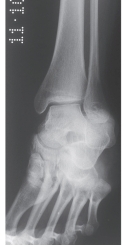
-Refer to the figure. On this standard view, which of the following is not well visualized?
A) Distal tibia
B) Distal fibula
C) Subtalar joint
D) Talar dome
Subtalar joint
3
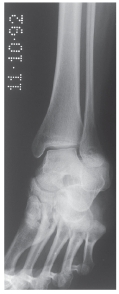
-Refer to the figure. Name the radiographic view.
A) Anteroposterior
B) Lateral
C) Anteroposterior obliques (mortise)
Anteroposterior obliques (mortise)
4
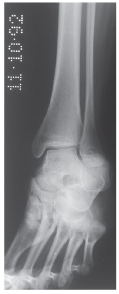
-Refer to the figure. This view allows for optimal assessment of the:
A) Talar dome
B) Subtalar joint
C) Lateral malleoli
D) Midtarsal joint

Unlock Deck
Unlock for access to all 10 flashcards in this deck.
Unlock Deck
k this deck
5

-What is the ankle mortise?
A) Radiographic joint space of the ankle
B) Tibiofibular joint space
C) Subtalar joint space
D) Midtarsal joint space

Unlock Deck
Unlock for access to all 10 flashcards in this deck.
Unlock Deck
k this deck
6

-Which radiograph view of the foot provides for the optimal evaluation of first metatarsophalangeal alignment related to hallux valgus deformity?
A) Anteroposterior
B) Lateral
C) Oblique

Unlock Deck
Unlock for access to all 10 flashcards in this deck.
Unlock Deck
k this deck
7

-Which radiograph view of the foot provides for the most visualization of the base of the fifth metatarsal?
A) Anteroposterior
B) Lateral
C) Oblique

Unlock Deck
Unlock for access to all 10 flashcards in this deck.
Unlock Deck
k this deck
8

-Tenderness to palpation in what area of the foot warrants getting radiographs, according to the Ottawa Foot and Ankle Rules, in an individual who describes an inversion ankle sprain?
A) Calcaneus
B) Cuboid groove
C) Base of fifth metatarsal
D) Head of fifth metatarsal

Unlock Deck
Unlock for access to all 10 flashcards in this deck.
Unlock Deck
k this deck
9

-Refer to the figure. Identify the image.
A) Sagittal T1-weighted MRI
B) Sagittal T2-weighted MRI
C) Coronal T1-weighted MRI
D) Coronal T2-weighted MRI

Unlock Deck
Unlock for access to all 10 flashcards in this deck.
Unlock Deck
k this deck
10
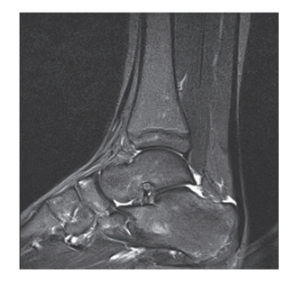
-Refer to the figure. You correctly identified the sequence in question 9 because joint fluid is seen as:
A) A high-intensity signal in this sequence
B) A low-intensity signal in this sequence

Unlock Deck
Unlock for access to all 10 flashcards in this deck.
Unlock Deck
k this deck



